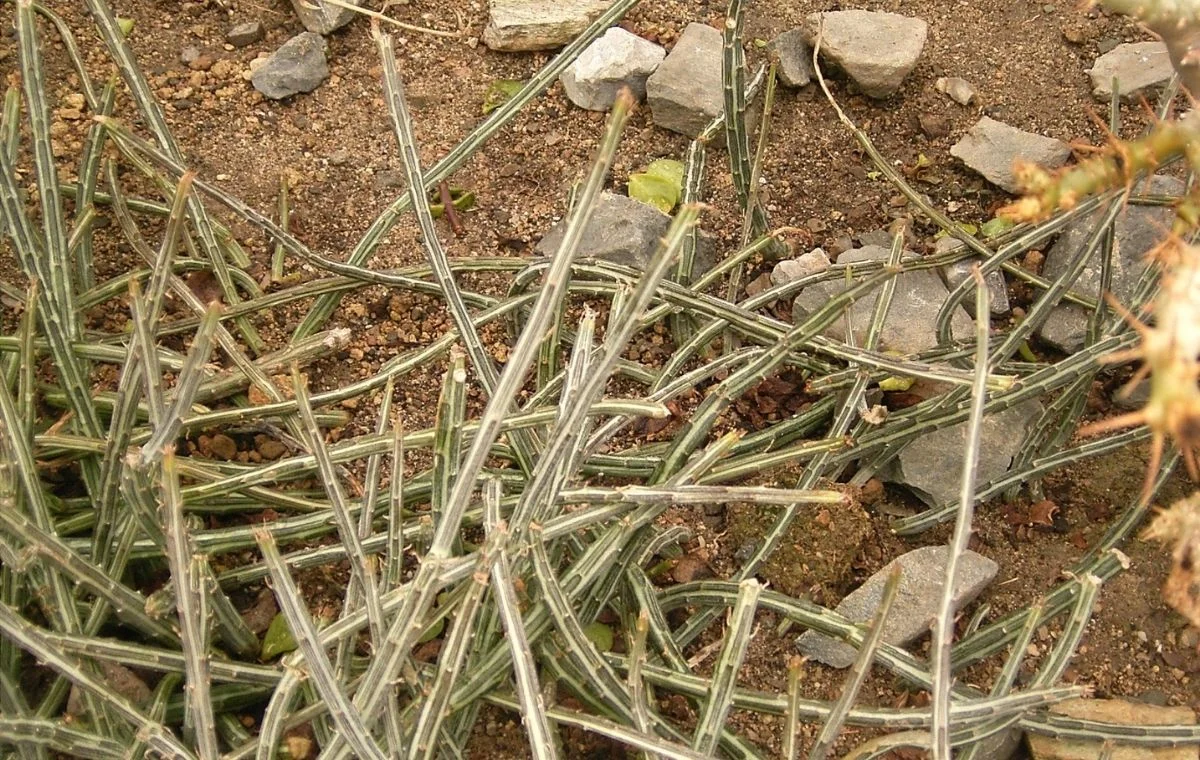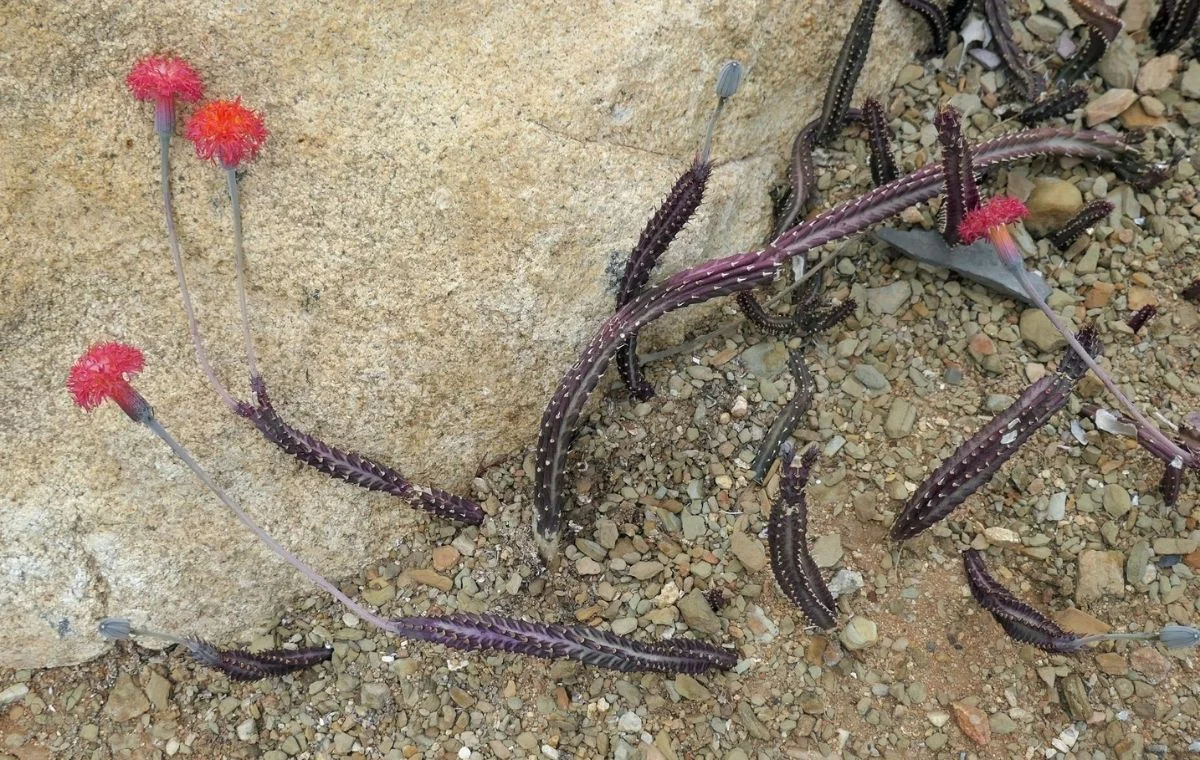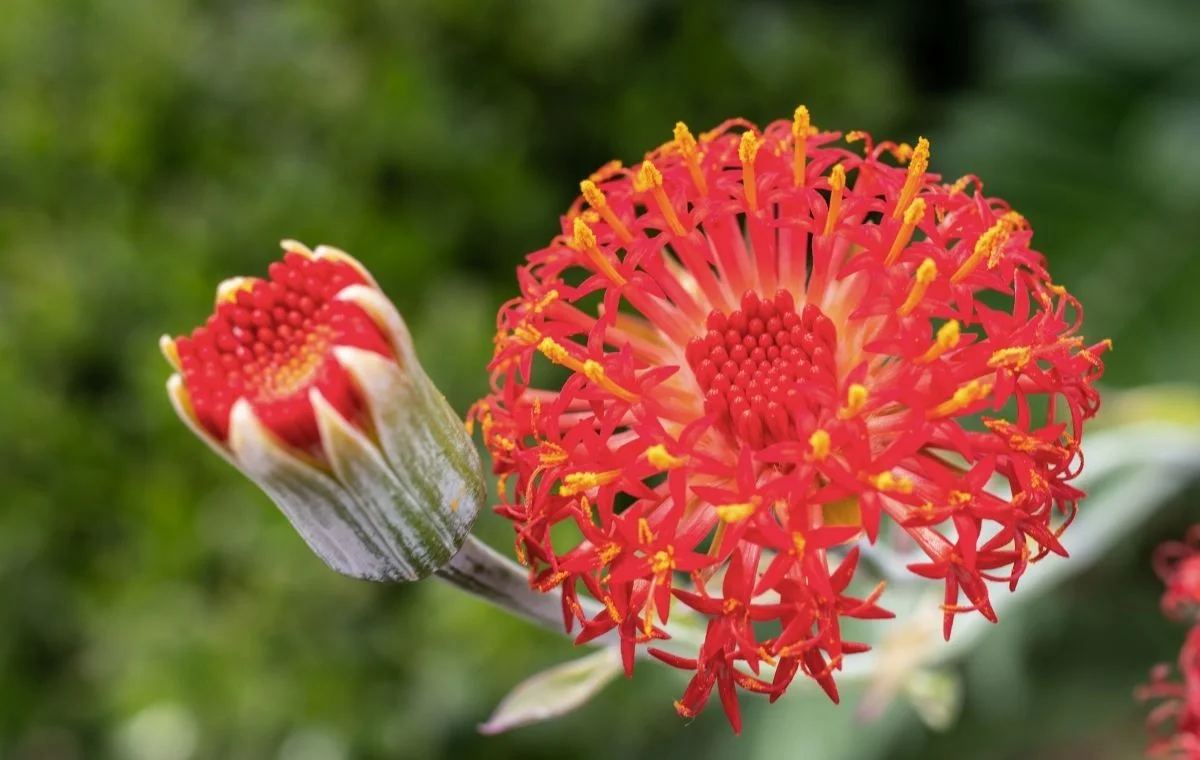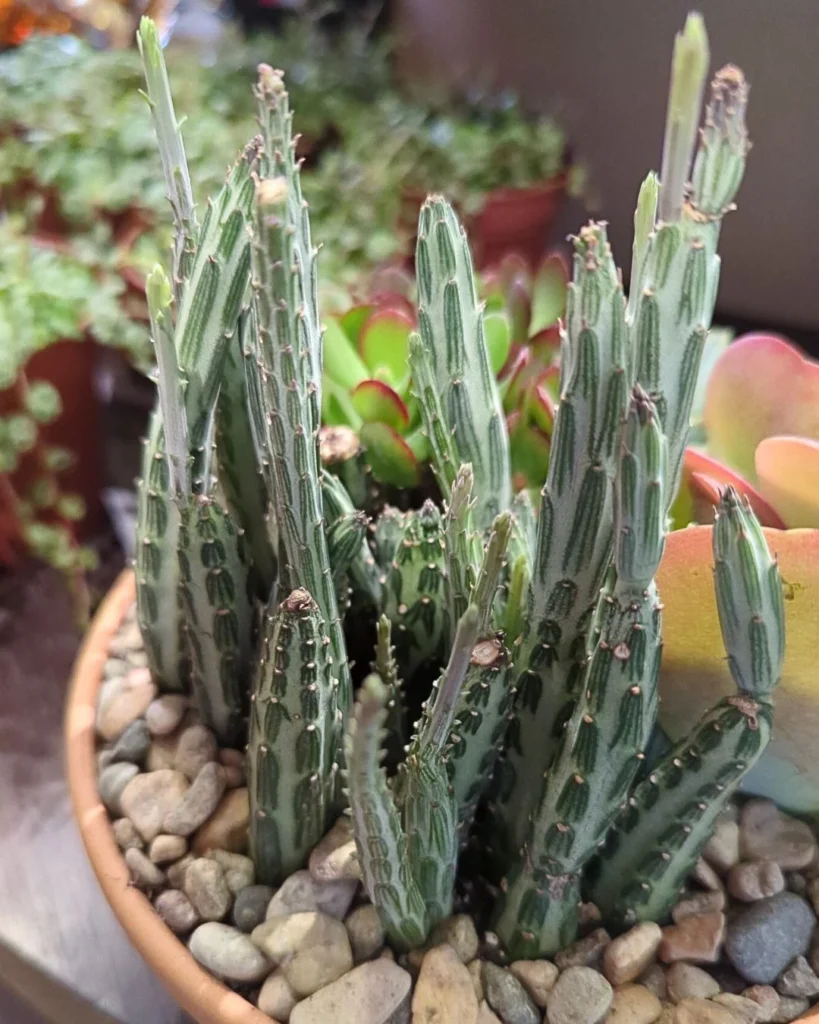The Pickle Plant (Kleinia stapeliiformis), or simply Kleinia, is a remarkable succulent native to the semi-arid regions of South Africa, Kenya, and Tanzania. Contrary to what some may think, this species is not a cactus. It is more closely related to daisies and senecios and belongs to the Asteraceae family. In its habitat, the Pickle Plant grows in rocky and sandy soils, with a climate characterized by low rainfall, high daytime temperatures, and cooler nights. The genus name “Kleinia” is in honor of Jacob Theodor Klein, an 18th-century German botanist, while the specific epithet “stapeliiformis” derives from the genus Stapelia, due to the similarity in the shape of the stems of these different plants.
Kleinia stapeliiformis is a perennial succulent that has cylindrical, succulent, and articulated stems that can grow up to 6-9 inches (15-24 cm) tall. They start their growth by branching underground, like a rhizome, and emerge erect, resembling pencils, candles, or cucumbers, which has earned it many amusing common names. As they grow and branch, these stems become decumbent to prostrate.
The color of the stems varies from green to gray-green, with cross-lines or spots in a darker green shade. The leaves are tiny, transformed into small soft spines that do not hurt the hands. The spines only grow on the dark green parts of the plant. Depending on stress conditions and lighting, the plant can also acquire purplish hues. Kleinia blooms in the summer, producing terminal capitulum-type inflorescences, with numerous attractive and graceful orange or reddish flowers.
In landscaping, Kleinia stapeliiformis is widely used in rock gardens, xeriscapes, and as a border plant in flower beds. Its unique shape and texture add a sculptural element to the garden. This plant is particularly effective in compositions with other succulents and cacti, creating a stylized desert scene. As it branches and prostrates as it grows, it can also act as ground cover.
In addition to its qualities as a garden plant, Kleinia stapeliiformis is also appreciated as an indoor plant, especially in terrariums and as a tabletop plant. It is particularly interesting when planted in planters and hanging baskets, where its branches can spill over and be admired from an unusual angle. Interestingly, in some African cultures, it is believed to have medicinal properties, although there is still no substantial scientific evidence to support these claims.
Kleinia stapeliiformis prefers full sun exposure but can also adapt to partial sunlight. In very hot summers, especially in equatorial climates, it is advisable to protect it from intense sun between 10 a.m. and 3 p.m. If growing the plant indoors, closely observe its growth. Plants that become very weak and thin are likely etiolated and need more sun exposure.
Kleinia does not tolerate waterlogged soils, so prepare the garden soil by adding materials to make it more drainable and airy, and prefer raised beds, which have a greater drainage capacity. In pots, it is recommended to use a substrate specific for cacti and succulents. If preparing the mix at home, consider adding perlite, sand, or vermiculite to the substrate to make it lighter and more drainable, and avoid adding organic materials such as compost or humus, only in small amounts, as they tend to make the substrate excessively moist. The watering of the Pickle Plant follows the scheme recommended for most cacti and succulents, that is, water only when the substrate is almost completely dry. Repot annually to avoid the problems of old substrate compaction.
Some sources indicate that Kleinia stapeliiformis has dormancy in winter, others in summer. However, it seems that as long as the plant receives water, it maintains its vegetative growth, as long as temperatures are not extreme. Bearing this in mind, it seems sensible to reduce watering at the height of winter or when the relative humidity is very high. Excess moisture is harmful and can lead to root rot.
Fertilize in spring and fall with fertilizers specific for succulents, following the manufacturer’s dosage recommendations. If you do not have access to a suitable fertilizer, use a multi-purpose fertilizer, but reduce the dose to 1/4 of the recommendation. Kleinia stapeliiformis is notably resistant to heat and drought, but is sensitive to intense cold (below 23°F [-5°C]) and frost. In regions with cold winters, it is advisable to grow it in containers that can be moved to protected environments.
Propagation of Kleinia stapeliiformis is commonly done by stem cuttings. Many collectors appreciate the erect look of the plant and seek to prune when the plant begins to become decumbent. The pruned branches can be great cuttings. The cuttings should be left in a shaded and ventilated place for a few days to form a callus before planting. This technique is simple and generally has a high success rate. Kleinia can also be propagated by seeds, placed in a substrate suitable for germination and kept moist.




